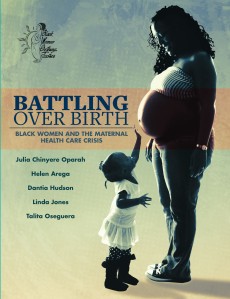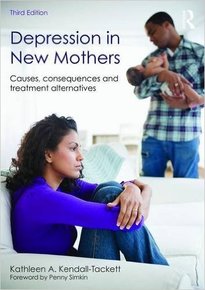Lois Wattis CM, RN, FACM, IBCLC takes a look at the risks and reasons for an induction of labour in childbirth.
Pregnancy provides a woman with a unique experience of her body in new and often challenging ways. The delight and wonder of feeling a baby move inside her is immensely powerful, connecting the mother and baby physically and emotionally long before their eyes meet after birth. The latter weeks of this intimate journey bring a cocktail of physical feelings, including discomforts, as the increasing weight and deepening position of the baby confirm they are preparing to end this period of their relationship and begin the next. The “due date” becomes a focus for the mother as she prepares her mind for the birth and her environment for the mothering to follow. I believe the feelings and discomforts experienced towards the end of pregnancy are nature’s way of readying the woman for the end of her pregnancy and the acceptance of her impending labour and birth.
Ideally, labour commences spontaneously when all physical and hormonal components are perfectly balanced to trigger the natural labour process. This may occur before or after the 40 weeks’ gestation “due date” calculated by her caregivers using her menstrual history and ultrasound scans. However, anywhere between 37 and 42 weeks is considered to be “term” in relation to the baby’s development.
A significant minority of babies will not be born by 41 weeks gestation. Whilst the definition of a prolonged pregnancy is beyond 42 weeks induction of labour is usually suggested during the 41st week (Reed, 2016).
 “There are familial factors related to recurrence of prolonged pregnancy across generations and both mother and father seem to contribute” (Morken, Melve, & Skjaerven, 2011). Length of gestation may also be influenced by factors such as diet, specifically multivitamins and mineral supplements (McAlpine, Scott, Scuffham, Perkins, & Vanderlelie, 2016).
“There are familial factors related to recurrence of prolonged pregnancy across generations and both mother and father seem to contribute” (Morken, Melve, & Skjaerven, 2011). Length of gestation may also be influenced by factors such as diet, specifically multivitamins and mineral supplements (McAlpine, Scott, Scuffham, Perkins, & Vanderlelie, 2016).
There are many reasons other than prolonged pregnancy that prompt advice to induce labour, which cannot be adequately addressed in this article. An offer to bring a pregnancy and its discomforts to an end may be welcomed by some women who readily agree to the intervention, perhaps without realising the potential associated risks.
Women report variable experiences of induction of labour afterwards, some are really happy with their experience, and others less so. But the overarching thing new mothers report on the topic of induction is that many women wish they had had more information (Wickham, 2014).
 The commonly held belief that the placenta ages and begins to shut down post-term was dispelled by Professor Harold Fox. He concluded “there is, in fact, no logical reason for believing that the placenta, which is a fetal organ, should age while the other fetal organs do not” (Fox, 1997). There is also no evidence to support the theory that the baby’s skull will calcify making moulding more difficult as the baby negotiates the expandable pelvis.
The commonly held belief that the placenta ages and begins to shut down post-term was dispelled by Professor Harold Fox. He concluded “there is, in fact, no logical reason for believing that the placenta, which is a fetal organ, should age while the other fetal organs do not” (Fox, 1997). There is also no evidence to support the theory that the baby’s skull will calcify making moulding more difficult as the baby negotiates the expandable pelvis.
Concerns about prolonged pregnancy centre on the increased possibility of the baby dying. “The substantial increase in risk occurs at 42 weeks onwards with a stillbirth rate of 1 in 1000” (Dekker, 2016). A review of research conducted in 2018 found that births after 42 weeks’ gestation may slightly increase risks for babies, including greater risk of death (before or shortly after birth). However, induction of labour may also have risks for mothers and babies, especially if women are not ready to labour. No tests can predict if babies would be better to stay inside their mothers or if labour should be induced to make the birth happen sooner (Middleton, Shepherd, & Crowther, 2018).
Hence, neither induction of labour nor waiting for spontaneous labour are risk free.
The risks of medical induction of labour include hyperstimulation of the uterus in response to artificial prostaglandins used to ripen the cervix. This can lead to a baby becoming distressed (fetal distress) and emergency cesarean birth. When the cervix has opened in response to the prostaglandins, artificial rupture of the membranes is offered to speed up the descent of the baby’s head towards the cervix, and contractions usually increase in strength and frequency following release of some amniotic fluid. This uncomfortable procedure can also cause fetal distress and lead to urgent cesarean birth. If the baby’s head is not well applied to the cervix, artificial rupture of the membranes can also result in prolapse of the umbilical cord in front of the baby’s head, which is an extreme emergency situation for the baby as the umbilical cord’s function is compromised.

When the induced labour has subsequently increased the strength of contractions, this is often when mothers may request pain relief. If the mother has not been required to have continuous fetal monitoring prior to this point, she is likely to be monitored from this point onwards, particularly if she opts for epidural pain relief. This intervention will also require intravenous fluid infusion and catheterisation of the bladder. Typically intravenous syntocinon (synthetic oxytocin) called pitocin in the US, will be prepared for infusion if the labour slows following the insertion of the epidural. In most cases, the woman’s ability to physically move during labour is now partially or completely impaired, and she can’t feel her monitored baby’s movements any more—instead, she views the baby’s heartbeat on a monitor as he or she responds to the effects of the drastically changed chemistry of the mother’s body and her contracting uterus with less protective fluid around the baby.

More serious but rarer risks can present in this scenario for the woman, such as rupturing of the uterus and maternal haemorrhage, and for the baby, hypoxic brain damage, neonatal retinal haemorrhage, and poor condition when born (low APGAR scores). The most extreme risks are rare, but fetal distress and cesarean birth are fairly common.
The use of intravenous syntocinon (pitocin) is also associated with reduced breastfeeding rates and increased postpartum depression/anxiety. Induction of labour and epidural analgesia result in more forceps and vacuum assisted vaginal births and associated vaginal trauma. Women having induction of labour for their first baby are at greater risk of adverse outcomes than those who have given birth vaginally before (Ehrenthal, Jiang, & Strobino, 2010).
The 2018 Cochrane review concluded that a policy of labour induction compared with expectant management is associated with fewer deaths of babies and fewer cesarean sections, but more assisted vaginal births. Although the chances of babies dying are small, it may help to offer women appropriate counselling to make an informed choice to have induction of labour for pregnancies at, or later than term, or to wait wait for labour to start and/or wait before inducing labour (Middleton, Shepherd, & Crowther, 2018).
More detailed evidence-based information about induction of labour is available from these websites: midwifethinking.com/ and sarawickham.com/
References
 Dekker, R. L. (2016). Labour induction for late-term or post-term pregnancy. Women and Birth, 29(4), 394–398. doi:10.1016/j.wombi.2016.01.007
Dekker, R. L. (2016). Labour induction for late-term or post-term pregnancy. Women and Birth, 29(4), 394–398. doi:10.1016/j.wombi.2016.01.007
Ehrenthal, D. B., Jiang, X., & Strobino, D. M. (2010). Labor Induction and the Risk of a Cesarean Delivery Among Nulliparous Women at Term. Obstetrics & Gynecology, 116(1), 35–42. doi:10.1097/aog.0b013e3181e10c5c
Fox, H. (1997). Aging of the placenta. Archives of Disease in Childhood – Fetal and Neonatal Edition, 77(3), F171–F175. doi:10.1136/fn.77.3.f171
McAlpine, J. M., Scott, R., Scuffham, P. A., Perkins, A. V., & Vanderlelie, J. J. (2016). The association between third trimester multivitamin/mineral supplements and gestational length in uncomplicated pregnancies. Women and Birth, 29(1), 41–46. doi:10.1016/j.wombi.2015.07.185
Middleton, P., Shepherd, E., & Crowther, C. A. (2018). Induction of labour for improving birth outcomes for women at or beyond term. Cochrane Database of Systematic Reviews. doi:10.1002/14651858.cd004945.pub4
Morken, N.-H., Melve, K., & Skjaerven, R. (2011). Recurrence of prolonged and post-term gestational age across generations: maternal and paternal contribution. BJOG: An International Journal of Obstetrics & Gynaecology, 118(13), 1630–1635. doi:10.1111/j.1471-0528.2011.03154.x
Reed, R. (2016) Induction of labour: Balancing risks. Midwifethinking.com (July, 13).
Wickham, S. (2014). Ten things I wish every woman knew about induction of labour. sarawickham.com

 Lois Wattis has been a midwife for over 20 years and an International Board Certified Lactation Consultant (IBCLC) since 2002. She has practised as an Independently Practising Midwife (IPM) in Western Australia for 5 years, providing primary midwifery care and attending home births with the Community Midwifery Program, employed by the Health Department of Western Australia. This government funded service offers care by a known midwife throughout pregnancy, home birth and for 6 weeks postpartum. Lois runs a private lactation consultancy in Queensland. She has provided professional education for midwives via international journals and the textbook Midwifery Best Practice, as well as speaking at conferences. Lois’ contribution to midwifery education was acknowledged at the International Confederation of Midwives in 2004, when she was awarded a Fellow of the Australian College of Midwives (FACM).
Lois Wattis has been a midwife for over 20 years and an International Board Certified Lactation Consultant (IBCLC) since 2002. She has practised as an Independently Practising Midwife (IPM) in Western Australia for 5 years, providing primary midwifery care and attending home births with the Community Midwifery Program, employed by the Health Department of Western Australia. This government funded service offers care by a known midwife throughout pregnancy, home birth and for 6 weeks postpartum. Lois runs a private lactation consultancy in Queensland. She has provided professional education for midwives via international journals and the textbook Midwifery Best Practice, as well as speaking at conferences. Lois’ contribution to midwifery education was acknowledged at the International Confederation of Midwives in 2004, when she was awarded a Fellow of the Australian College of Midwives (FACM).
Lois has worked in a specialist role as Clinical Midwife Lactation Consultant in an acute setting for the past decade, assisting term and preterm babies to establish breastfeeding, often working with multiples and babies with genetic and birth related difficulties. Her broad experience has culminated in the creation of these helpful resources: New Baby 101 – A Midwife’s Guide for New Parents. The 5 free “how to” videos support the resources and Lois updates parents daily with information on the New Baby 101 Facebook page.























August 30, 2018 at 5:47 am
Thanks for your post it is very informative and helpful
LikeLike